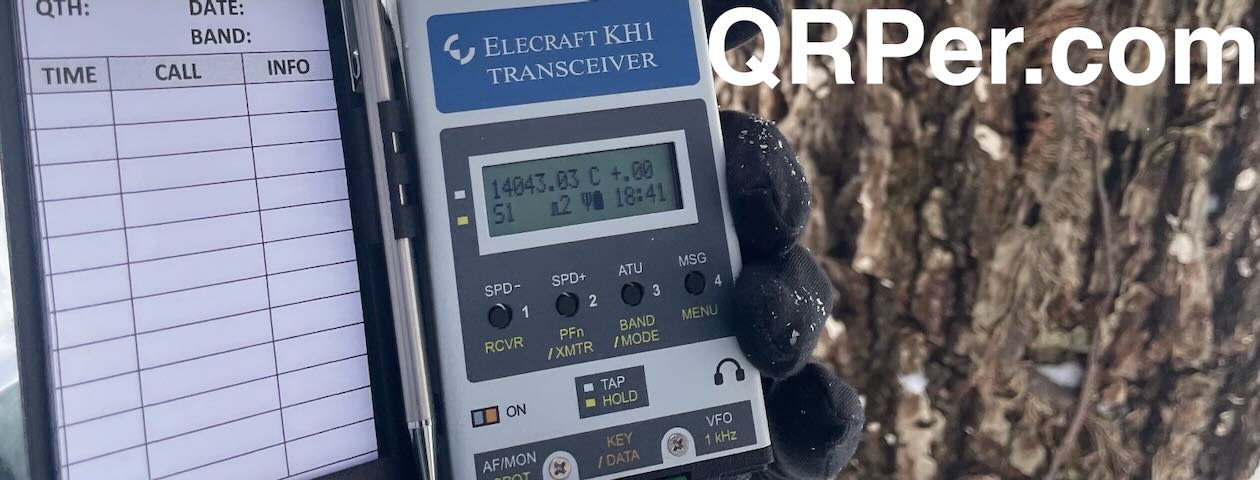 The one thing about doing POTA activations in the winter is being aware of just how short the days are. It seems like, lately, I’ve had a number of activations that have spilled over well beyond sunset.
The one thing about doing POTA activations in the winter is being aware of just how short the days are. It seems like, lately, I’ve had a number of activations that have spilled over well beyond sunset.
With POTA, running out of sunlight really isn’t a big deal. As long as I have a headlamp (I always do) and/or a lantern, I can continue operating as long as the park is still open to guests.
With SOTA, running out of sunlight can develop into a serious situation, especially if you’ve bushwhacked to a summit in unfamiliar territory. Even with a headlamp, it can be difficult finding your way back to an established trail. I’ve never scheduled a SOTA activation that pushed sunset unless I’m comfortable with the path to the summit.
If I’m being honest, I think a part of me actually enjoys doing POTA activations after sunset. It feels a lot like camping.
On Sunday, December 4, 2022, I was on the road once again and could not help but squeeze in a POTA activation at Lake James State Park.
It was late afternoon and I knew I’d be pushing sunset, but I had my little LED lantern just in case I ran out of sunlight (hint: I did!) and I was ready to play some radio: both CW and SSB!
Lake James State Park (K-2739)
 It was a grey, chilly day and there were no other cars in the parking lot at the Catawba River Access. I had the whole park to myself until closing time at 7:00PM.
It was a grey, chilly day and there were no other cars in the parking lot at the Catawba River Access. I had the whole park to myself until closing time at 7:00PM.
I chose a picnic table by the lake, putting some distance between me and the visitor’s center which has been known to spew radio interference (QRM) in the past.
I brought along my Elecraft KX3 for this activation.
The KX3 is one of my top field portable radios, but I rarely take it to the field these days for a couple reasons:
- It’s my main shack radio and is hooked up to my KXPA100 amplifier 100% of the time (although I rarely run enough power that the amplifier engages). I do much of my park/summit hunting from home with the KX3.
- Since I purchased my KX2 in 2016, I tend to take it to the field instead since it’s *that* much more portable. It’s like a smaller version of the KX3 with nearly the performance and only lacking 160 and 6 meters.
But I do love my KX3. It’s a benchmark radio–and one of the best field transceivers on the market. You will see a few field reports with it each year since I try to give all of my radios a regular dose of fresh air!
Setting up
 After recording the intro to my activation video (which I tried to do before the sun actually set), I decided to film the antenna deployment as well.
After recording the intro to my activation video (which I tried to do before the sun actually set), I decided to film the antenna deployment as well.
I debated which antenna to use at the site. I decided upon the super easy-to-deploy 28.5′ “no transformer” random wire antenna by Tufteln (see link in the Gear section below). I first demoed this super simple antenna on Mount Mitchell during a SOTA activation. It’s basically two lengths of 28.5 foot 26 AWG wire connected to a BNC connector on a small 3D printed mount which provides strain relief.
This antenna is basically my super simple speaker wire antenna, just in a more compact form factor. Since there’s no transformer, the antenna relies on an ATU to do all of the heavy work of sorting out impedance matches. Continue reading QRP by Lantern Light: A CW/SSB sunset POTA activation at Lake James State Park
































